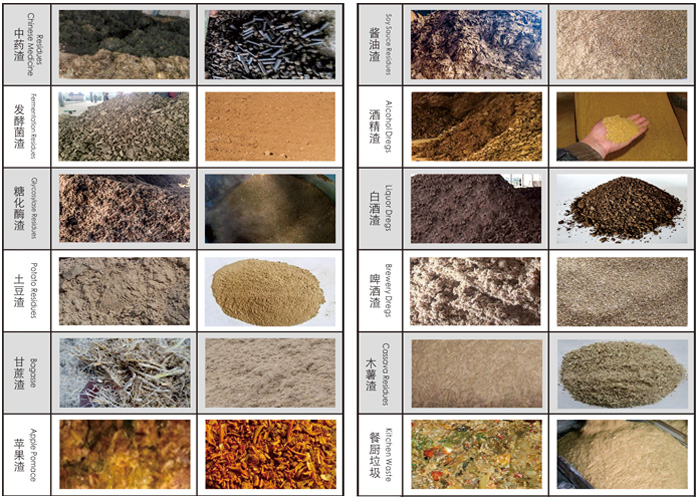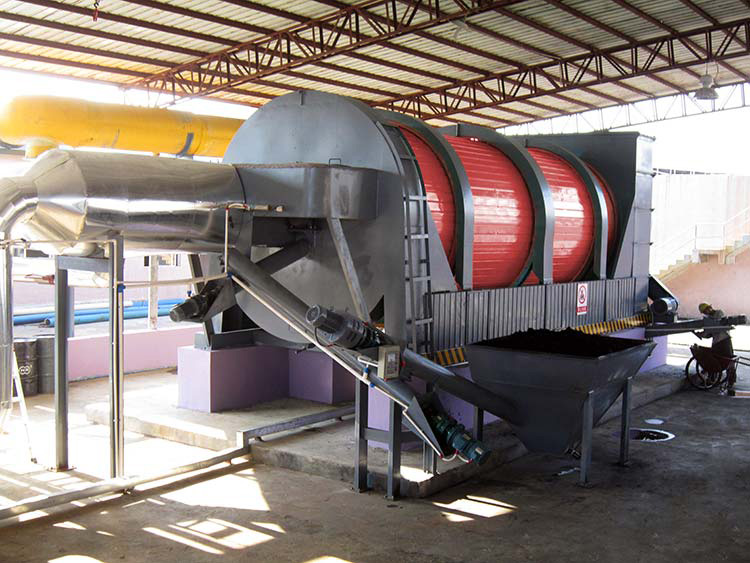Dregs Dryer
Brewer's grains (grains) Baijiu (residue) alcohol residue potato residue potato residue cassava residue starch residue medicine residue vinegar residue soy sauce residue penicillin residue antibiotic residue western medicine residue saccharifying enzyme residue fermented bacteria residue sugar residue algal residue tea residue sugar residue bagasse apple pomace pear residue tomato residue fermented feed palm residue coconut wire etc.
Application AreaIt can be widely used in breweries feed factories pharmaceutical factories starch factories food processing plants and other industries.
24 Hours Free Consultation Hotline
+86-176-3914-6338
Product Details
Grains and dregs are the surplus by-products produced in the production process of food or agricultural products processing, wine making and other industries, which are rich in material resources. According to the data statistics, the annual production of dregs in China is on the rise. If it is not handled in time, it is not only easy to ferment, rot, stink, breed mosquitoes, cause serious pollution to the environment, but also increase the production cost of enterprises. However, due to the rich organic matter, nitrogen, phosphorus, potassium and other mineral trace elements needed for crop production, as well as a large number of carbohydrates, crude protein, crude fat and crude fiber, it is very suitable for livestock feed.

The dregs dryer can quickly dry the materials with moisture content of about 80% to about 10%, greatly reducing the moisture content in the materials, reducing the volume of materials, and facilitating the subsequent transportation and storage. The materials dried by the dregs dryer can be further recycled, which can not only turn industrial waste into treasure, but also reduce environmental pollution, and improve the added value of dregs products

1. Equipment structure
The equipment adopts a three sleeve structure, that is, three cylinder sleeves of different sizes are embedded together, which reduces the length of the equipment, reduces the actual floor area, and greatly increases the storage space inside the cylinder and increases the processing capacity of the equipment.
2. Equipment operation
Fully automatic operation, high degree of intelligence, simple and convenient operation, 24-hour continuous operation;
3. Heat distribution
In the process of drying, the temperature and air volume can be adjusted according to the moisture content of the dregs in different stages.
4. Equipment material
The equipment is made of materials with high temperature resistance, corrosion resistance and wear resistance. The equipment has good quality, stable performance and low failure rate. Greatly extend the service life of the equipment.
5. Energy saving and environmental protection
The whole production process of the system is tightly sealed, which can effectively reduce gas leakage and heat dissipation, and has good energy saving and environmental protection performance.
6. Heat source range
The heat source of the equipment can be gas, coal, electricity, oil, biomass particles, boiler flue gas waste heat resources and steam, etc;
7. The finished product is controllable
The quality of the dried dregs is even, and the state and size of the dregs can be adjusted according to the user's requirements to facilitate the next use.

Brewer's grains (grains), Baijiu (residue), alcohol residue, potato residue, potato residue, cassava residue, starch residue, medicine residue, vinegar residue, soy sauce residue, penicillin residue, antibiotic residue, western medicine residue, saccharifying enzyme residue, fermented bacteria residue, sugar residue, algal residue, tea residue, sugar residue, bagasse, apple pomace, pear residue, tomato residue, fermented feed, palm residue, coconut wire, etc.
It can be widely used in breweries, feed factories, pharmaceutical factories, starch factories, food processing plants and other industries.

The structure design of the dregs dryer is reasonable, which is mainly composed of hot blast stove, feeding device, dryer body, discharging device, induced draft fan, dust removal equipment, power distribution cabinet, etc.
Its technological process: hot blast stove is the place to produce heat energy. The fuel is added into the hot blast stove to produce high-temperature heat medium through combustion, which provides continuous and stable heat for the main body of the dryer. Then, the feeding device (belt conveyor, seal scraper conveyor or screw conveyor) evenly and continuously sends the materials into the dryer. The heat exchange between the material and the high-temperature heat medium is carried out inside the cylinder, so that the moisture in the material is evaporated, and the material changes from high humidity and high viscosity to non humidity and non viscosity. The materials meeting the drying requirements are transported out through the discharging device for unified packaging and loading. The flue gas, dust and other gases generated in the drying process are transported to the dust removal equipment through the induced draft fan for purification, filtration and dust reduction, so as to achieve the gas emission standard. The whole drying production line is integrated to complete the drying of materials.
Customer Case
dregs dryer case video
- Heating mode: coal, natural gas, oil, biomass particles, steam, boiler flue gas
- Processing capacity: 50-300t / D / set
- Suitable material moisture content: 60% - 70%
- Moisture content of finished product: 10% - 15%
SOLUTION
-
About +
About us Contact us -
Solution +
Sludge Dryer Steam Dryer Pulp Dryer Dregs Dryer Waste Heat Utilization Dryer Dryer For Mining,Metallurgy And Chemical Industry Auxiliary Equipment Of Dryer -
Case Video +
Sludge dryer case video steam dryer case video pulp dryer case video dregs dryer case video Waste heat utilization dryer case video Dryer For Mining,Metallurgy And Chemical Industry case video -
News +
Company News Industry News Technical Information














